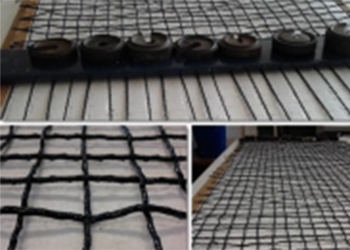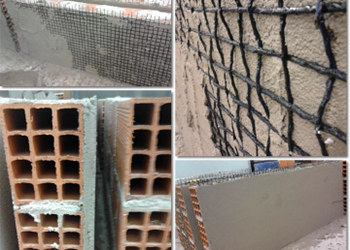Masonry has been the most widely used constructive solution for the construction of the wall constructive element, whose purpose is to separate the exterior space and the interior space, as well as to compartmentalize and define the interior spaces of buildings.
The earthquakes that have occurred in recent times have shown that masonry filling panels still do not receive due attention in the response of reinforced concrete building structures. As recently demonstrated in the different buildings affected by this phenomenon, masonry is the element most affected, and its repair or replacement has high costs.


A seismic shock, despite being a geological phenomenon, has always terrified man, largely because of its devastating power. The earthquakes in Turkey (Kocaeli 1999, Duzce 1999, Bingol 2003 and Van 2011), Italy (L´Aquila 2009) and Spain (Lorca 2011), revealed vulnerability in the construction of masonry walls, largely due to the deficiency in construction and the degradation of the materials that constitute it. The report produced by the Center for Research on the Epidemiology of Disasters (CRED), of the University of Leuven (Belgium), revealed that, in the last decade, earthquakes were responsible for 60% of the deaths that occurred in natural disasters. Part of these deaths was due to the collapse of buildings, with a considerable share due to the fall of its walls (masonry walls) outside its plan, normally affected by those outside the buildings.
In order to solve the consequences, more efficient reinforcement systems have been developed in order to prevent the collapse of masonry walls. Mortars Reinforced by Textile Structures (TRM), have assumed a predominant role regarding the reinforcement of masonry walls. However, these reinforcements still have some gaps, in terms of their performance.
Structural monitoring is currently achieved through elements external to the reinforcement materials, thus assuming itself as an extra component to the solution itself. Thus, this type of solution becomes difficult to apply in masonry monitoring, since it represents high costs in its application. In addition to the high cost, current monitoring solutions do not allow anomalies to be detected in the reinforcement material.
Motivated by the resolution or mitigation of these problems, the investigation in this field, assumes a predominant role to find new solutions or improvements to the existing solutions, in order to develop innovative reinforcements for masonry walls. Thus, the material to be studied in the scope of this work should be designed taking into account durability, monitoring and structural reinforcement.
This project takes place within the scope of the PhD student Fernando Cunha under the guidance of Raul Fangueiro and co-supervision by Graça Vasconcelos.
